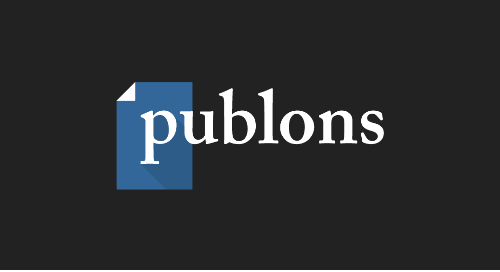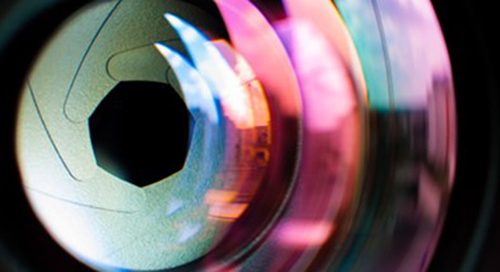how-can-editors-detect-manuscripts-and-publications-from-paper-mills
August 26, 2020
Increasingly, across the research publishing landscape, research integrity and publishing ethics issues are growing in complexity. In addition to concerns around plagiarism, data, and authorship, for example, there are also large-scale manipulations of the publication process including fabricated peer review, paper mills, and image manipulation. These represent particularly challenging issues for which there are no easy solutions. Here we talk with Jennifer Byrne and Jana Christopher who have independently written on the topic of academic fraud and co-published an article together about their experience of the workings of paper mills and what editors could look out for.
What are paper mills and what purpose do they serve?
Paper mills are alleged to offer products ranging from research data through to ghostwritten fraudulent or fabricated manuscripts and submission services. While paper mill operations remain poorly understood, it seems likely that paper mills need to balance product quantity and quality, such that they produce or contribute to large numbers of manuscripts that will be accepted for publication. In recent years, it has been proposed that unrealistic requirements for academics and medical doctors to publish in research journals, combined with monetary publication rewards, have led to forms of contract cheating provided by paper mill organizations.
| FIgure1: Overview of approaches that can be taken by editors, journal staff, and/or peer reviewers to detect manuscripts and publications that may have been produced by paper mills. |
What are the characteristics of a paper that has been created by a paper mill?
Producing manuscripts at scale may be facilitated by the use of manuscript templates, which could give rise to shared features even across different studies. These may be indicated by textual and organizational similarities, the description of highly generic study hypotheses and experimental approaches, digital images that show evidence of manipulation and/or reuse, and/or errors affecting verifiable experimental reagents.
What checks and balances can publishers put in place?
Given the particular features or characteristics of manuscripts from paper mills, we propose some practical steps that editors, journal staff, and peer reviewers can take to recognize manuscripts that have been produced with undeclared assistance from paper mills. There are also summarized in Figure 1.
- At the time of manuscript submission, journals can screen for:
- the features that we propose are associated with mass‐produced manuscripts – e.g. textual similarity, similarity of experimental approaches,
- image duplications or manipulations,
- errors in verifiable reagents such as incorrect nucleotide sequence reagent.
- Journals and peer reviewers can require authors to fully disclose nucleotide sequence and other verifiable reagent information within the methods or results sections, and data sharing policies can be helpful in this regard.
- Editors can request the raw data that underpin reported experimental results. As some forms of raw data can be fabricated, raw data files (including raw image files) must also be scrutinized carefully.
- The practice of submitting manuscripts to multiple journals simultaneously is highly wasteful of editorial and peer reviewer time. Allowing and encouraging researchers to post submitted manuscripts to a preprint server would place manuscripts, the associated journal, and the date and time of submission within the public domain, thereby deterring the simultaneous submission of individual manuscripts to multiple journals.
- Editors and peer reviewers should prioritize manuscripts that are likely to inform the predicted biochemical functions of any gene(s) or protein(s) of interest. In contrast, manuscripts describing a series of experiments that are poorly matched to a predicted gene or protein functions should be considered for desk rejection.
Thank you for those thoughts, Jennifer and Jana. While the complexity of this problem doesn’t allow for easy solutions, nevertheless there are policies and processes that journals can put in place to highlight questionable research practices. For example, open research initiatives such as data sharing and responsible data science increase transparency about the data and trust in the published research. Adopting initiatives such as Registered Reports that place emphasis on the research proposal and methods also speak to increasing the integrity of the research undertaken. In addition, there is a role for technology to increase trust in research image data, and pilot initiatives demonstrate how researchers and publishers can work together on potential solutions. At Wiley we are piloting a new centralized and scalable image checking service to identify potential image manipulation in articles submitted to journals that would benefit from this. Help and support is also available from Wiley’s Integrity in Publishing Group and editors should contact their Journal Publishing Manager for assistance. In addition, the Committee on Publication Ethics will be discussing the topic of paper mills at its forthcoming Forum on 4 September, which editors can register to attend.
Read the full article: Byrne, J.A. and Christopher, J. (2020), Digital magic, or the dark arts of the 21st century—how can journals and peer reviewers detect manuscripts and publications from paper mills? FEBS Lett, 594: 583-589. DOI:10.1002/1873-3468.13747
About the authors:
Jennifer Byrne PhD
Jennifer Byrne has spent her scientific career analyzing childhood and adult cancers at a molecular level. Her PhD studies mapped loss of chromosome 11p15 loci in embryonal tumours, and she then identified a novel gene family during postdoctoral studies in France. Professor Byrne is Director Of Biobanking with NSW Health Pathology, and Professor of Molecular Oncology in the School of Medical Sciences in the Faculty of Medicine and Health. Jennifer was previously (Acting) Head of the Children's Cancer Research Unit at The Children's Hospital at Westmead from 2008-2019, and Deputy Director of the Kids Cancer Alliance from 2018-2019.She chaired the Biobanking Sub-committee of Australia and New Zealand Children’s Oncology Group from 2016-2020.
https://www.sydney.edu.au/medicine-health/about/our-people/academic-staff/jennifer-byrne.html
Jana Christopher MA
Jana Christopher has worked in publishing since 2003. She set up the Image Integrity programme at EMBO Press in 2011 and started her own business Image-Integrity in 2015, clients include Nanyang Technical University and A*Star University in Singapore, eLife Sciences and The Royal Society. Jana joined FEBS Press in 2017 as the Image Data Integrity Analyst for their 4 journals. She also runs training courses and regularly presents to students and young scientists.








